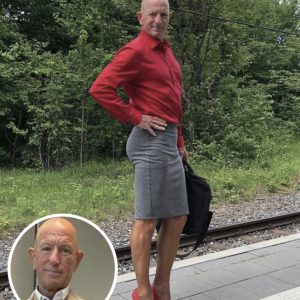
In the small town of Willow Creek, known for its vibrant community and scenic landscapes, lived Martha, a woman widely regarded as a good mother and an active community leader. Martha had always believed in the power of listening, especially to the younger generation whose fresh perspectives could bring about meaningful change.
One crisp autumn evening, during a community meeting in the quaint town hall, a respectable young man named Eli stood up to speak. Eli, a recent college graduate with a degree in environmental science, presented a compelling vision for a sustainable community garden that would not only beautify the town but also provide fresh produce to the local schools and elderly homes.
Martha listened intently as Eli outlined his ideas, explaining how this garden could become a central hub for community activity, where children could learn about agriculture and older residents could enjoy time outdoors. His plan included spaces for educational workshops and seasonal events that could draw visitors from surrounding areas, boosting local business.
Moved by Eli’s passion and the potential benefits of his project, Martha approached him after the meeting. She offered her support and guidance to help turn his vision into reality. Together, they formed a small committee, enlisting the help of other community members who were equally excited about the project.
Martha used her extensive network to gather resources, from local farmers donating seeds and tools to businesses offering financial support. She also facilitated workshops where Eli could share his knowledge, educating the community about sustainability practices.
As weeks turned into months, the empty lot by the old mill was transformed into a thriving garden. Rows of vegetables and flowers bloomed, and the town buzzed with activity. Children ran through the pathways, learning to plant seeds and tend to their growth, while seniors gathered under the newly built gazebo to chat and enjoy the beauty of nature around them.
The community garden became a symbol of what could be achieved when different generations listened to each other and worked together. It was not just a place of growth for plants but also for relationships and ideas. Martha, seeing the success of their collaboration, felt a profound sense of accomplishment and hope. She knew that by supporting Eli, she had helped foster a legacy of love and respect that would nourish the community for many years to come.
The project not only made Willow Creek a more beautiful and connected place but also taught everyone involved the importance of listening, dreaming, and, most importantly, doing, all woven together by the bonds of respect and affection.




